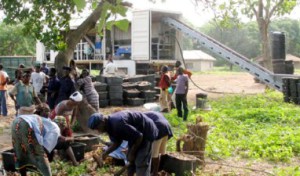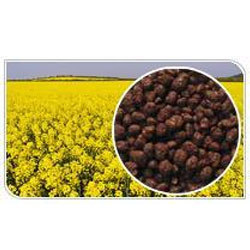A biobased industry should not copy petrochemical industry’s structure: that structure has been optimised for over a century, for this particular feedstock. In order to compete, the biobased industry should particularly be lean on materials flows: it should use all components present, and refrain from transport flows that would not be strictly necessary. According to Johan Sanders, who recently held his valedictory speech at Wageningen UR.

Most crops are very wet. This does not merely hold true for products of so-called ‘wet agriculture’ like potatoes and beets, but also for maize, wood, straw, grass etc. Water contents of 80% and higher are not uncommon. According to the design rule discussed here, the biobased industry should get rid of this water as soon as possible. Even if transport costs would not be prohibitive (transport being very cheap, as a matter of fact), industrial performance could be quite adversely affected by the need to get rid of the water after the crop has gone through the factory gate. Minerals like potassium, nitrogen and phosphate need to be returned to the land, and most separation techniques, like evaporation or membrane separation, are costly and energy intensive. Moreover, once within the factory, soluble minerals and side products may present disposal problems because of environmental regulation.
Crop pre-treatment
For these reasons, Johan Sanders cooperated in the development of crop pre-treatment at the farm, or in a cooperative of farmers. In such a pre-treatment, the crop is separated in a wet fraction that contains the majority of the mineral content and is returned to the land, and a storable intermediate product that can be transported to the factory at a moment that suits the farmer. This is a scheme with multiple benefits. The farmer does not deplete the land from its minerals. And the central processing unit can extend its operations around the year: agro-industries cease to be seasonal.
An example of such a development is DADTCO’s Autonomous Mobile Processing Unit (AMPU), available in Ghana, Nigeria and Mozambique. These units process fresh cassava on-farm or nearby, instead of transporting the perishable roots over long distances to a central factory. This strengthens the position of the farmer vis-à-vis the processing firm. The obtained storable cassava cake is used as a raw material in beverages, cassava flour, starch, high fructose syrups, biodegradable plastics, and other starch based products. Sanders and others developed similar processes for the treatment of sugar beet and potatoes.

Use all components
Another element of the lean treatment of materials flows is the use of all components of the crop. Often, the use of a single component will not build a solid business case. But using biorefinery technology, the feedstock can be separated into components that can be sold on different markets, thereby adding greatly to the value of the crop. Sanders takes the example of rape meal. This is sold as animal fodder at € 200 per ton. It is much too expensive for the energy market. But it can be broken down into components: proteins, animal feed, amino acids, ferment substrates, lignocellulose, fibres, phosphate and a rest. In doing so, the value of the ton is raised to about double the value. The lignocellulose fraction can be sold at € 45 per ton, the present price on the energy market; this is compensated for by the much higher price of other components, notably proteins.
There might be some problems in actual practice
Lean treatment of materials flows can be very difficult in practice. For instance, factories processing wet crops like sugar cane, often receive their feedstock from an area with a radius of ca. 50 kms. But it is quite uneconomical to transport water containing minerals to the land across a distance longer than ca. 2 kms. This would result in overfertilising the land directly adjacent to the factory, and depletion of the land further away from its minerals – according to Sanders, this is what is happening in Brazil now. The biobased economy will not be sustainable (in both senses of the word) unless a solution for this problem has been found.
Equally difficult could prove the guideline to use all components in the crop. The calculated value of the components of one ton of rape meal may be € 400, but in actual practice the value might be much lower. Each component has to be sold on a specific market, in the right quantities and with the right specifications. Products from biorefineries may just be not adequate for their markets. Quantities may be too low or too high. And specs may not be right. For instance, grass biorefinery can produce excellent fibres for pulp production – but often there are obstacles in practice. The volumes may be too small; or optimisation of the process on the most valuable component (proteins) may reduce the quality of the fibre; or the fibres may be too green for the intended cardboard quality. Getting the biobased economy going, might therefore pose big challenges to the design of the biorefinery process or imply a hell of a job to marketers.
But the general rule is valid. Biobased industry should be aware of all the components in de feedstock. It should get rid of the troublesome bits right away, and maximise the use and value of each of the remaining components. The biobased economy can only get started if industry does keep this in mind.
This series ‘Design rules for the biobased industry’ consists of the following articles:
#1: reduce capital costs and create jobs
#2: be lean on materials flows
#3: preserve structure
#4: elegance is beautiful
